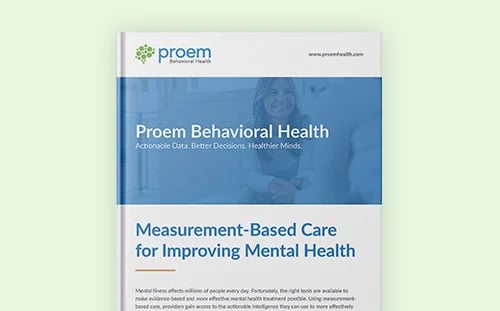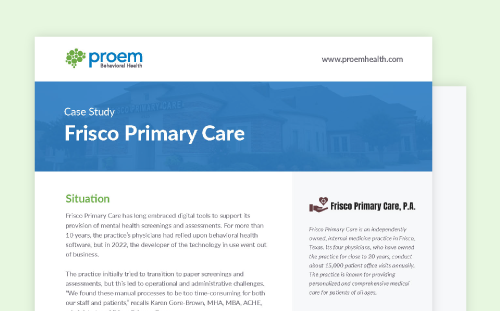.png?width=1200&name=NVIEW%20BLOG%20Banner%20Template%20(3).png) Every September, we strive to raise awareness of suicide — a stigmatized and often taboo topic. Suicide Prevention Awareness Month is a time when resources and stories are shared to help shed light on suicide and prevention efforts. We must build upon these efforts and continue them year-round if we hope to reduce the incredible number of lives lost to suicide.
Every September, we strive to raise awareness of suicide — a stigmatized and often taboo topic. Suicide Prevention Awareness Month is a time when resources and stories are shared to help shed light on suicide and prevention efforts. We must build upon these efforts and continue them year-round if we hope to reduce the incredible number of lives lost to suicide.
Here are 31 eye-opening U.S. statistics that demonstrate why suicide prevention and mental health services require more attention and support.
1-3. In 2019, 12 million American adults seriously thought about suicide, 3.5 million planned a suicide attempt, and 1.4 million attempted suicide.
4-6. Suicide is the second leading cause of death among people aged 10–34, the fourth leading cause among people aged 35–44, and the fifth leading cause among people aged 45–54.
- It's the 10th leading cause of death overall in the US.
- Suicide was responsible for more than 47,500 deaths in 2019.
- That's about 130 suicides every day.
- And about one death every 11 minutes.
- The number of suicides is nearly 2.5 times as many as homicides.
- The overall suicide rate in the US has increased by 35% since 1999.
- The rate of suicide among veterans was 32.0 per 100,000.
- That's compared with 17.2 per 100,000 for nonveterans in 2018.
- Since 2005, the suicide rate has risen faster among veterans than it has for nonveteran adults.
- The rate of suicide among Veterans Health Administration patients with a mental health or substance use disorder diagnosis was 57.2 per 100,000.
- That's more than double the rate among those without these diagnoses.
- One out of every 53 high school students reports having made a suicide attempt that was serious enough to be treated by a doctor or a nurse.
- For each suicide death among young people, there may be as many as 100–200 suicide attempts.
- About half (46%) of people who die by suicide had a diagnosed mental health condition.
- Of those dying by suicide, about 45% will have seen their primary care provider within the month before their death.
- Only 20% will have seen a mental health professional in that period.
- About 90% of people who die by suicide experienced mental health symptoms.
- More than 3 out of every 4 (78%) people who die by suicide are male.
- More women than men attempt suicide, yet men are nearly 4x more likely to die by suicide.
- Lesbian, gay, and bisexual youth are four times more likely to attempt suicide than straight youth.
- Transgender adults are nearly 12 times more likely to attempt suicide than the general population.
- Suicide is the leading cause of death for people held in local jails.
- Suicides and suicide attempts cost the nation more than $70 billion annually in lifetime medical and work-loss costs.
- More than 90% of people who attempt suicide and survive never go on to die by suicide.
- About 93% of adults surveyed think suicide can be prevented.
Suicide Prevention: Reasons for Optimism
While these stats generally paint a sad, discouraging picture, there are reasons we should be optimistic about preventing suicides. As noted above, fewer than half of patients who committed suicide saw their doctor in the 30 days prior to the attempt, with only one in five seeing a mental health professional during this period. There is a tremendous opportunity to improve how we assess, identify, and treat mental health disorders — efforts that would undoubtedly reduce the number of suicides and suicide attempts while also getting more patients the behavioral healthcare and support they need.
How? It is essential that we make mental healthcare an integrated component of our healthcare conversations and practice. The good news is that this is becoming easier thanks to digital health solutions that not only improve the assessment, identification, and treatment of disorders but also help better track, monitor, and document patient outcomes. Now we must integrate these tools into the daily operations of healthcare organizations and professionals and make their usage a standard component of patient care. Through such initiatives, we can help better support and achieve the goals of Suicide Prevention Awareness Month.
Data sources:
- American Foundation for Suicide Prevention
- American Journal of Psychiatry
- Centers for Disease Control and Prevention (CDC)
- National Alliance on Mental Illness (NAMI)
- RAND Corp.
- Youth.gov





.png)
-1.png)





